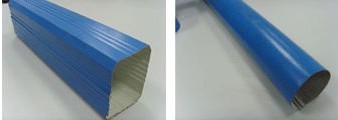
Understanding Trapezoid Roof Sheet Forming Machines
In the world of construction and manufacturing, efficiency and durability are paramount. One of the key components that contribute to these values in roofing applications is the trapezoid roof sheet forming machine. This innovative equipment brings numerous advantages to the table, revolutionizing the production of trapezoidal metal sheets used for roofs in industrial, commercial, and residential buildings.
What is a Trapezoid Roof Sheet Forming Machine?
A trapezoid roof sheet forming machine is specialized machinery designed to produce trapezoidal metal roofing sheets from various materials, including galvanized steel, aluminum, and other metallic alloys. These machines operate through a continuous process where raw sheets are fed into the forming system, which then shapes them into the distinctive trapezoidal profile. The manufactured sheets are known for their strength, aesthetics, and weather resistance.
Key Features and Components
1. Feeding System At the start of the production process, the raw materials are unwound and fed into the machine. This stage requires precision to ensure that the sheets are fed correctly and uniformly.
2. Roll Forming Station The core of the trapezoid roof sheet forming machine is its roll forming station, which consists of multiple rollers. These rollers are carefully positioned to incrementally bend and shape the metal into the desired trapezoidal profile. The design of the rollers is crucial as it directly affects the quality and consistency of the final product.
3. Cutting Mechanism Once the sheets have been formed, they need to be cut to the required lengths. Most machines come equipped with an automatic cutting mechanism that activates once the desired length is reached, ensuring precision and speed.
4. Control System Modern trapezoid roof sheet forming machines are equipped with advanced digital control systems. Operators can set parameters such as sheet length, speed of production, and other critical specifications through a user-friendly interface, enhancing operational efficiency.

5. Stacking Device After cutting, the finished sheets are moved to a stacking device where they are neatly stacked for easy handling and transportation. This component is essential for maintaining organization in the production facility.
Benefits of Using a Trapezoid Roof Sheet Forming Machine
1. Cost Efficiency Producing trapezoidal sheets in-house can significantly reduce material and labor costs in roofing projects. By streamlining the manufacturing process, companies can achieve higher output while minimizing wastage.
2. Quality Control Having the ability to produce sheets on-site allows for better quality control over the materials used. Manufacturers can select high-grade materials and ensure that the production process meets their required standards.
3. Customization Options The flexibility of these machines allows manufacturers to customize the size, thickness, and color of the roofing sheets according to the specific needs of a project. This makes it ideal for contractors working on diverse building designs.
4. Durability and Strength Trapezoidal roofing sheets produced using these machines are known for their strength and resistance against harsh weather conditions. This ensures longevity and reduces maintenance costs over the lifespan of the roof.
5. Environmental Considerations Many manufacturers are opting for eco-friendly practices by using recyclable materials in their production processes. This not only meets regulatory requirements but also caters to the growing consumer demand for sustainable building materials.
Conclusion
In conclusion, the trapezoid roof sheet forming machine plays an integral role in the modern construction industry. Its precision, efficiency, and ability to produce high-quality roofing solutions make it an invaluable asset for manufacturers and contractors alike. By investing in such technology, businesses can enhance their productivity, reduce costs, and contribute to the creation of durable and aesthetically pleasing structures that stand the test of time. As trends in construction continue to evolve, machines like these will undoubtedly remain at the forefront of innovation.